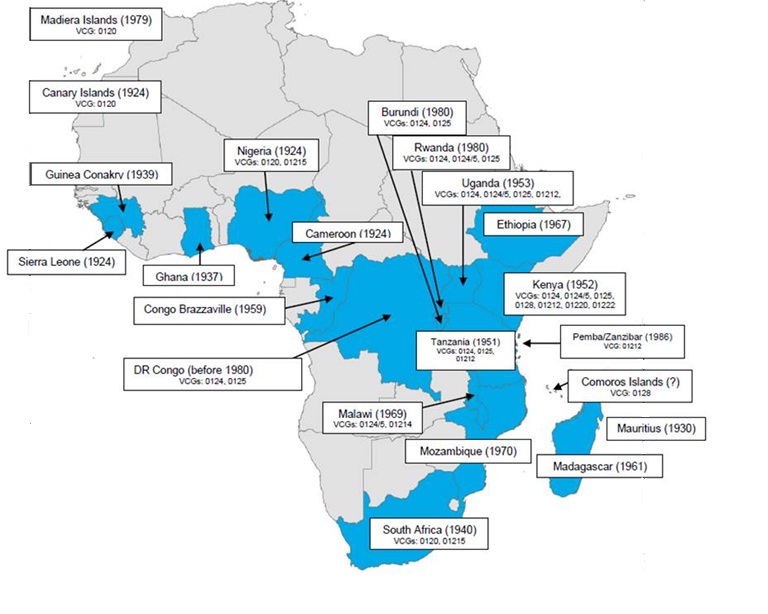In the early half of the 20th century, a fungal disease called Fusarium wilt (Panama disease) devastated commercial export banana plantations of Gros Michel bananas, first in Central America but later also in western Africa. This led to the mass replacement of Gros Michel plantations with Cavendish clones due to their immunity to the responsible fungal pathogen, Foc race 1. Certain cooking banana varieties in Africa are also immune to Foc race 1, but the sweet dessert and juicing banana varieties planted on the continent, such as Sukali Ndizi, Pisang Awak and also Gros Michel, are highly susceptible. Cavendish bananas in South Africa are susceptible to attack by a different strain, called Foc 'subtropical' race 4 (called Foc STR4), which infects plants after they become vulnerable due to cooler temperatures.
A new, highly virulent 'tropical' form of Foc race 4 (TR4) emerged in Asia in 1990 where it decimated Cavendish plantations. Foc TR4 has now entered Africa and has the potential to devastate the banana production on the continent. Once introduced into fields, the fungus cannot be eradicated because it produces durable resting spores (chlamydospores) that can be easily spread through contaminated planting material, water and soil. While it is known that Foc TR4 will destroy all varieties of dessert bananas currently being cultivated commercially, it is unknown whether cooking and juicing bananas or plantains resident to the African continent will be able to resist the pathogen.

Fusarium wilt in Africa (Blomme et al. 2013. Ann. Appl. Biol. 162: 4-26)

